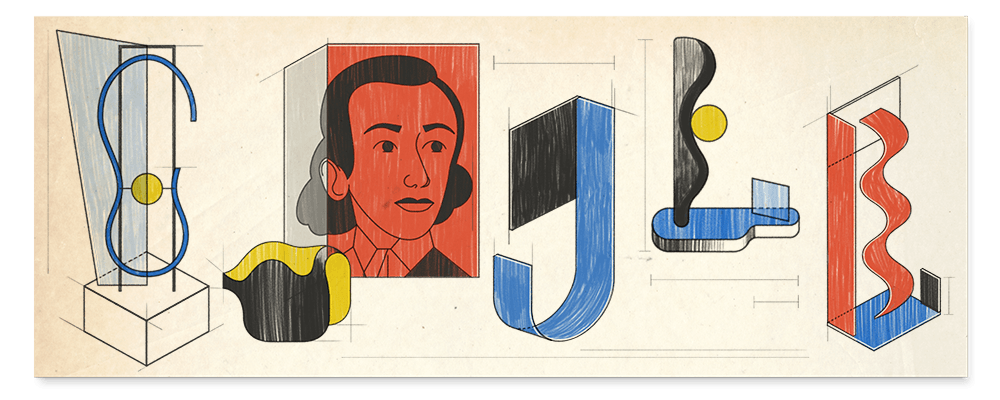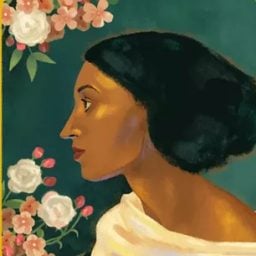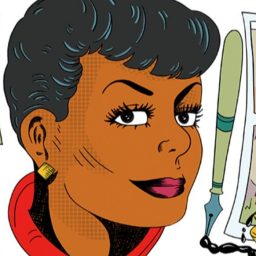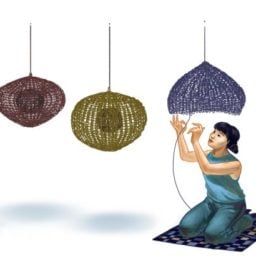Today’s Google Doodle honors Katarzyna Kobro, an avant-garde Polish sculptor and art theorist who was part of the Constructivist art movement in the early 20th century.
Born in Moscow on January 26, 1898, Kobro would have turned 124 today. She began studying at the Moscow School of Painting, Sculpture, and Architecture in 1917, and joined the left-leaning Trade Union of Painters of the City of Moscow the following year, working in the avant-garde of Russian Modern art.
Kobro made her first sculpture, Tos 75 – Struktura (Tos 75 – Structure), in 1920, combining metal, wood, glass, and cork to create an innovative, abstract geometric form. Breaking from artistic traditions, which considered sculpture as a discrete object, Kobro aimed to create works that coexisted within the surrounding space, letting it penetrate her forms.
The most important thing for sculpture, she wrote, was “the relationship between the space contained within the sculpture and the space situated outside the sculpture.”
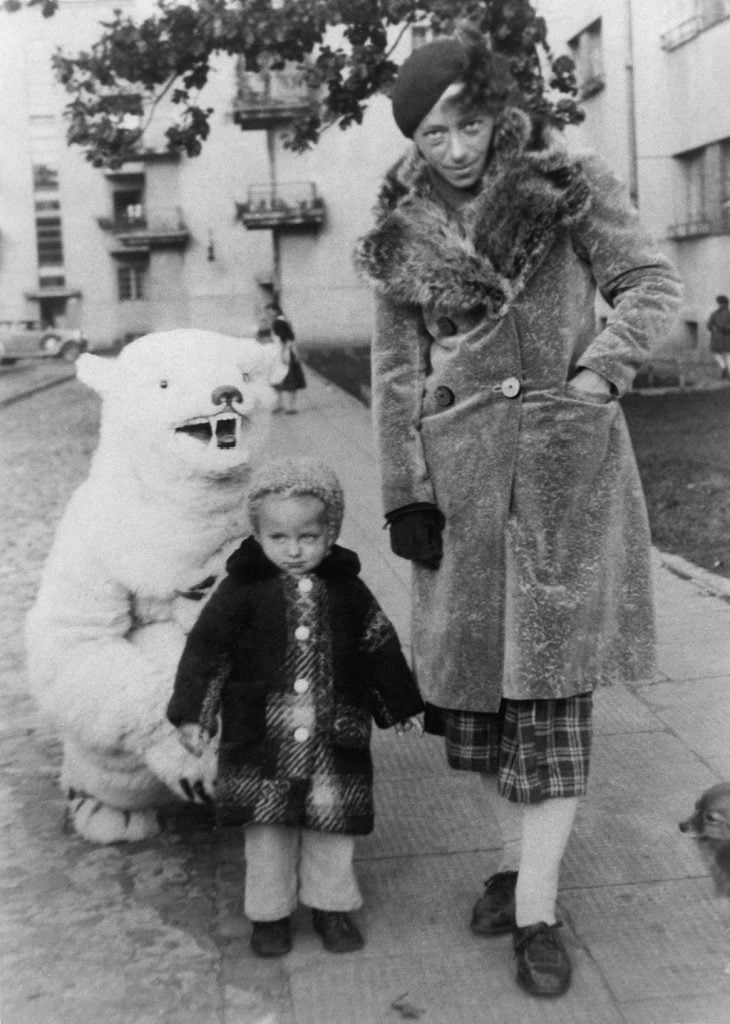
Katarzyna Kobro with her daughter in 1938. Photo in public domain.
In 1924, Kobro and her husband, avant-garde painter Władysław Strzemiński, fled Russia, settling in Poland. Much of her work was destroyed by the Nazis in World War II, in a raid of her studio during the invasion of Poland in 1939. Some of her sculptures have been refabricated posthumously—Kobro died in 1951—while others are only known thanks to photographs.
A permanent collection gallery on the fifth floor at New York’s Museum of Modern Art titled “Katarzyna Kobro, Shaping Space” is dedicated to the artist and her circle, and the lasting influence of what the institution describes as her “radically open structures made from intersecting planes of sheet metal.” Among the works on view is one of her few surviving sculptures, Spatial Composition (5), on loan from the Muzeum Sztuki in Łódź, Poland.

Katarzyna Kobro, Spatial Composition (5), 1925. Photo by Ewa Sapka-Pawliczak, courtesy of the Muzeum Sztuki, Łódź, Poland, on loan to the Museum of Modern Art, New York.
The daily doodle traces its origins to 1998, when Google’s co-founders updated the search engine’s logo to feature a Burning Man image while they were out of the office. Some of art history’s most famed figure have since been honored on the internet giant’s homepage, such as the Dutch Golden Age master Johannes Vermeer on November 12, 2021.
But less well-known and overlooked artists have also recently gotten the Google Doodle treatment, such as Spanish cartoonist, author, television writer, and film director Antonio “Forges” Fraguas de Pablo (January 17); Two Spirit Native American fiber artist, weaver, and potter We:wa, of the Zuni tribe (November 1, 2021); Singaporean artist Georgette Chen, a founder of the post-Impressionist Nanyang painting style (November 1, 2021); and gender-non-conforming Surrealist French photographer Claude Cahun (October 25, 2021).
